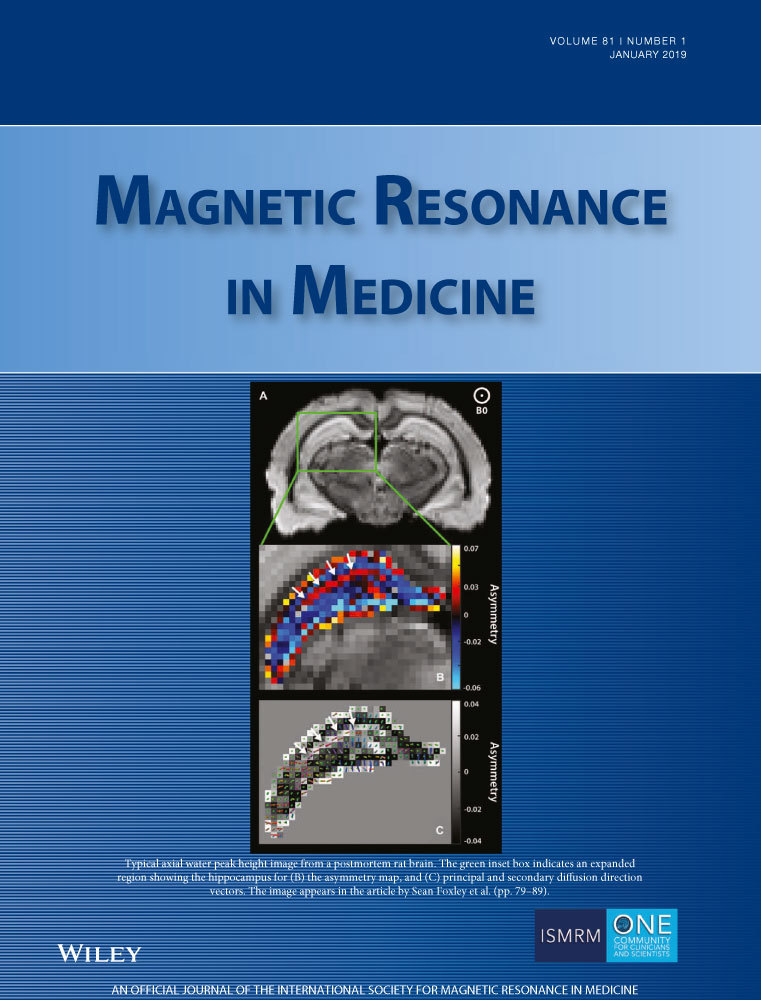CEST imaging at 9.4 T using adjusted adiabatic spin-lock pulses for on- and off-resonant T1⍴-dominated Z-spectrum acquisition
Funding information
The financial support of the Max Planck Society, German Research Foundation (DFG, grant ZA 814/2-1, support to MS, KH), and European Union's Horizon 2020 research and innovation program (Grant Agreement No. 667510, support to MZ, AD) is gratefully acknowledged.
Abstract
Purpose
The CEST experiment, with its correlation to rare proton species that are in exchange with the water pool, is very similar to the off-resonant water spin-lock (SL) experiment. In particular, low-power SL Z-spectrum acquisition allows insight into T1ρ and exchange effects with decreased direct water saturation. Because the available SL methods either require high B1 power or are instable in the presence of strong B1 and B0 inhomogeneity present at ultra-high fields, the goal of this study was to find a robust adiabatic SL pulse for on- and off-resonant application in the human brain at 9.4 T.
Methods
A series of Bloch simulations were used to find optimal pulse shape parameters of an adjusted hyperbolic secant pulse applicable in the low power regime typically used for exchange-weighted SL experiments. The optimized pulse was implemented and tested in phantom and in vivo experiments on a 9.4 T human scanner for on- and off-resonant T1ρ- and Z-spectrum measurements.
Results
The simulation yielded a feasible pulse shape, which yielded robust images, less sensitivity to B1 and B0 inhomogeneity compared with previous SL approaches and less direct water saturation, as well as a higher chemical exchange weighting compared with conventional CEST approaches.
Conclusion
By adapting a pulse shape for low-power SL experiments, we were able to acquire robust on- and off-resonant adiabatic SL prepared images in vivo at 9.4 T. This development leads directly to SL Z-spectrum acquisition, beneficial for chemical-exchange-weighted MRI.




